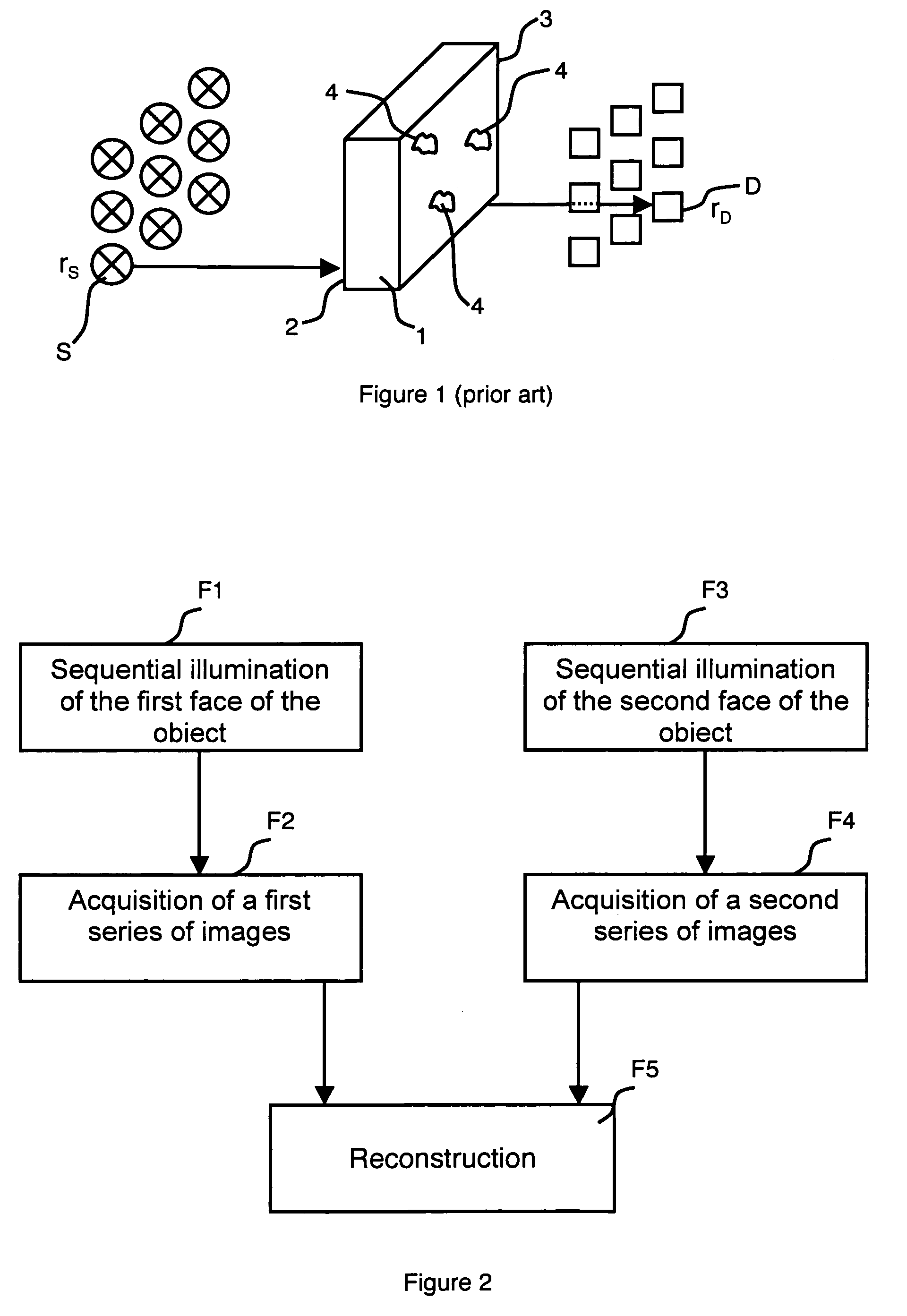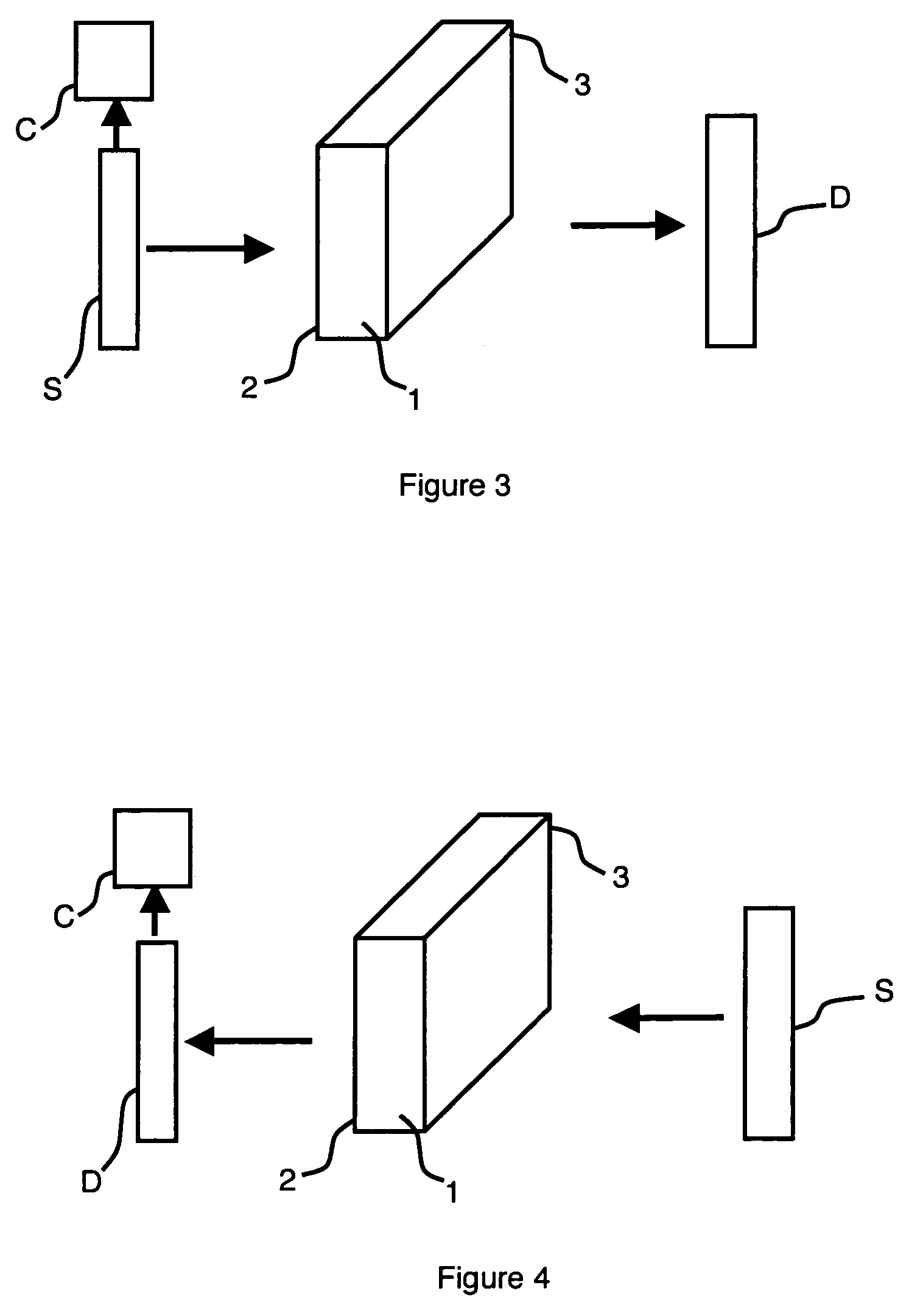Method and device for reconstructing a three-dimensional fluorescence optical tomography image by double measurement
a fluorescence optical tomography and image reconstruction technology, applied in the field of three-dimensional fluorescence optical tomography image reconstruction, can solve problems such as loss of image reconstruction precision, and achieve the effect of improving reconstruction resolution
- Summary
- Abstract
- Description
- Claims
- Application Information
AI Technical Summary
Benefits of technology
Problems solved by technology
Method used
Image
Examples
Embodiment Construction
[0030]The invention relates to a parallel planes geometry, the object 1 typically having a thickness comprised between 10 and 15 mm. A set of light sources S constituting a series of discrete lighting points for illumination of the object is preferably formed by a laser source which is moved in a plane parallel to the object in two orthogonal directions in order to grid object 1. The laser typically describes a grid of 11 by 15 positions with a pitch of 3 mm in this plane. Depending on the precision to be obtained, the pitch can be reduced and, depending on the size of the zone to be observed, the number of points can be increased (for example about 30 points or more in both directions).
[0031]The set of detectors is preferably formed by a CCD camera coupled with a lens to detect an image of the object in a plane parallel to the surface of object 1. The camera thereby acquires one image for each position of the laser source. More precisely, when the object is sequentially illuminated...
PUM
| Property | Measurement | Unit |
|---|---|---|
| height | aaaaa | aaaaa |
| thickness | aaaaa | aaaaa |
| thickness | aaaaa | aaaaa |
Abstract
Description
Claims
Application Information
 Login to View More
Login to View More - R&D
- Intellectual Property
- Life Sciences
- Materials
- Tech Scout
- Unparalleled Data Quality
- Higher Quality Content
- 60% Fewer Hallucinations
Browse by: Latest US Patents, China's latest patents, Technical Efficacy Thesaurus, Application Domain, Technology Topic, Popular Technical Reports.
© 2025 PatSnap. All rights reserved.Legal|Privacy policy|Modern Slavery Act Transparency Statement|Sitemap|About US| Contact US: help@patsnap.com



